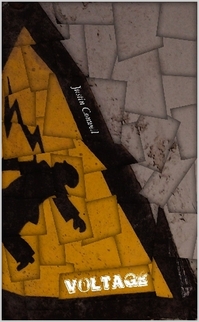 PLOT
PLOTSixty years ago, the cosmic imp Chance, in his eternal quest for entertainment, set a scheme in motion. He contrived to inspire Sadie and Lillian, best friends at Hometown Junior High, to write the story of Subring, a hellish realm where the mean girls who bullied them would be punished. Scared of their own creation, the girls quickly abandon the story. But dark ideas, once loosed, are not always easily buried.
Now, decades later, Chance is ready for the grand amusement to begin. A new generation of Hometown residents, including Sadie's own granddaughter, have been set in motion and are ready to assume their roles. And Subring is ready to be unlocked.
MY TAKEI expected the worst from
Perchance to Feast. The back cover description seemed to promise a twee fairy tale. Based upon my own prejudices, the author bio (Ms. Belitsky describes herself as a "retired teacher" who "is passionate about peace, the environment, the Bill of Rights and all things built of words") appeared even worse. I knew I was being unfair, but what could a retired teacher have to say to someone as jaded as me? And the first few pages -- told from Chance's point of view -- heightened my fears. They struck me as overwritten, filled with alienating alliteration and the typical "look at the superior cosmic being who happens to find amusement in playing with humans" clichés that I have seen so many times before.
And, to be honest,
Perchance to Feast does lack a certain professional polish that betrays its POD origins. The (thankfully few) passages told from Chance's perspective continue to be heavy-handed. Similarly, Sadie's dialogue, filled with "Oy!"s and noun-verb inversions, is less colorful than it is a caricature (she is a Russian immigrant). And Ms. Belitsky's decision to use on-the-nose names for places and off-stage characters (the novel takes place in "Hometown," which is home to both "Hometown Junior High" and snooty "Classical Academy;" "Mr. Cleanitup" is the janitor, while "Mrs. Fuddydud" and "Mrs. Stickler" are teachers) is not so much clever as evidence that Ms. Belitsky was trying too hard.
But my reservations soon fell away, and I suddenly realized that I was truly enjoying
Perchance to Feast . The novel quickly hit its stride once the POV shifted from Chance to other characters and the story began to unfold. Yes, the novel is essentially a fairy tale about a brave young girl foiling the plans of a grotesque evil queen. However,
Perchance to Feast is anything but twee. The story is surprisingly dark, mature and involving. Although Subring does not open its doors until the last portion of the book, Ms. Belitsky holds our interest throughout with an interesting backstory and a slowly escalating tension, with a fully satisfying resolution.
Indeed, the many successes of
Perchance to Feast easily overcome its few stylistic failings. In particular, Ms. Belitsky's handling of one of the novel's underlying themes -- how stories impact our lives -- is impressively graceful. Novels dealing with "the power of the imagination" are often uncomfortably blunt and, quite frankly,
unimaginative. But
Perchance to Feast handles this theme deftly. The novel may not exactly be
subtle; after all, the premise of the novel is that Chance has manipulated the cosmos so that the imaginary Subring will intrude on the real world. But Ms. Belitsky's handling of this subject is elegant and low-key, allowing the theme to play out naturally and without becoming overbearing.
Ultimately, however, it is Ms. Belitsky's handling of her characters that is particularly accomplished. The more "down to earth" characters, such as Lillian (an elderly woman for most of the novel) and Sadie's grand-daughter Karma Robin (a thirteen year old who likes to be called K-Rob) all feel genuine, despite the range in their ages and personalities. The more "extreme" characters such as the villainous Hera, the drama teacher at Classical Academy, are so (entertainingly) monstrous as to be almost inhuman. Yet both types of character work well on their own and, impressively, this contrast does not tear the novel apart. Perhaps the ability of these disparate characters to co-exist is due to Ms. Belitsky's decision to keep them apart for most of the novel, until the situation is so out-of-control that the mashing of the ordinary and the extreme seems reasonable. Or perhaps it is because Ms. Belitsky succeeds in giving us just enough background detail about even the monsters so that, ultimately, they don't seem quite so inhuman after all.
AVAILABILITYPerchance to Feast is available for $15.95 from
iUniverse or
Amazon. (As always, iUniverse has
a free preview of several pages available.) Ms. Belitsky writes a blog about the novel called
Perchance to Publish; she has written several interesting posts about the benefits and frustrations of publishing through iUniverse, including a couple that reveal how such an interesting novel ended up with such an uninspiring cover.
BONUS RECOMMENDATION
Back during the initial run of this blog, John Purlia sent me a review copy of his novel
The Extraordinary Adventures of the 25 Year Old Birthday Muse (available from Lulu through a special link
available on request from the author). I didn't review it at the time because I didn't know quite what to say. In large part, I still don't.
Extraordinary Adventures is an episodic fairy tale about Kathy, muse of Gardening, Fashion and Photography, who wishes on her twenty-fifth birthday to "finally find the artist whom I shall inspire." She is immediately cast from Olympus in order that she might better chase her dream. What follows is a series of agreeable encounters with quirky people and places (illustrated by full-color reproductions of masterpieces of mythologically inspired art), events that, while individually interesting, lack conflict or narrative drive. I enjoyed
Extraordinary Adventures, the same way one might enjoy a languorous stroll through a local art museum on a hot afternoon: a pleasant diversion to be sure, and worthwhile in its understated charms, but, ultimately, not fully inspiring.
 Howard McKay isn't really a superhero. He doesn't have any superpowers. In fact, he's a fat alcoholic, who only dresses up in a fluorescent yellow body suit (complete with pink running shorts and boots) because of an unfortunate incident in which he mooned a judge during a drunken romp through the park. As his punishment, the vindictive judge sentenced Howard to an even more unfortunate community service sentence: to patrol the city streets as a citizen watchdog, while dressed in the rather unique aforementioned ensemble.
Howard McKay isn't really a superhero. He doesn't have any superpowers. In fact, he's a fat alcoholic, who only dresses up in a fluorescent yellow body suit (complete with pink running shorts and boots) because of an unfortunate incident in which he mooned a judge during a drunken romp through the park. As his punishment, the vindictive judge sentenced Howard to an even more unfortunate community service sentence: to patrol the city streets as a citizen watchdog, while dressed in the rather unique aforementioned ensemble.  PLOT
PLOT Laura "Keepsie" Branson is in the Third Wave of people born with superpowers: anyone who tries to steal from her gets frozen in place. A few years ago, her power was judged inadequate, and her application to train with the First and Second Wavers at the Seventh City hero Academy rejected. So now Keepsie quietly runs her bar, catering to her minor-league peers. Until she suddenly finds herself at the center of an epic battle between the mightiest heroes and villains of Seventh City, and Keepsie and her friends discover that it is up to them to save the day -- if they can figure out whose side they're really on.
Laura "Keepsie" Branson is in the Third Wave of people born with superpowers: anyone who tries to steal from her gets frozen in place. A few years ago, her power was judged inadequate, and her application to train with the First and Second Wavers at the Seventh City hero Academy rejected. So now Keepsie quietly runs her bar, catering to her minor-league peers. Until she suddenly finds herself at the center of an epic battle between the mightiest heroes and villains of Seventh City, and Keepsie and her friends discover that it is up to them to save the day -- if they can figure out whose side they're really on. PLOT
PLOT PLOT
PLOT Back during the initial run of this blog, John Purlia sent me a review copy of his novel
Back during the initial run of this blog, John Purlia sent me a review copy of his novel 